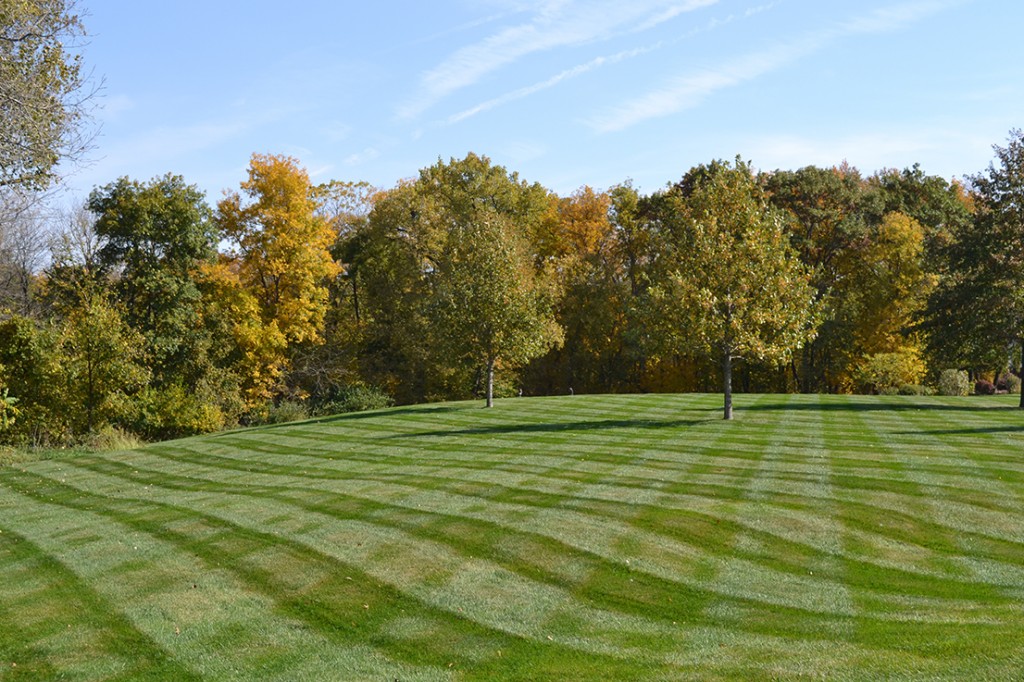If you are looking to improve the overall health of your lawn, there are a few things that you should consider. Several necessary components are needed to give you the perfect yard. A thriving lawn must have good soil. We define good soil as an ideal environment to encourage root development and nutrient uptake. Good soil is accomplished in several ways. First, your soil must be fertile. The ideal pH of soil should be around 7. Soils that are below 7 are acidic. Soils that are above 7 are alkaline. Amendments are required when the soil pH is too far off in one direction.
Secondly, your soil needs to allow nutrient uptake. Examples of poor soil types are clay, sandy, and rocky. Clay impedes the grass plants ability to root in. Roots provide nutrient and moisture uptake. For this to happen correctly, there must be an adequate root system. Sandy soil usually does not contain the nutrients necessary to develop a flourishing lawn. Also, sand filters water and does not help store moisture. Since grass is 85% water, it is vital that the plant has adequate water present. Rocky soil impedes root growth. Roots are not able to grow into rock and will struggle for nutrients and moisture.
Several horticultural practices will help your lawn in addition to a proper fertilizing program.
AERATION
Core aeration is one of the best ways to keep your turf healthy. The benefits of core aeration include:
- Reduction in soil compaction.
- Increased movement of air, water and other vital nutrients into the root system.
- Helps reduce excessive thatch build-up.
- Stimulates new root development.
Core aeration removes lawn plugs about 1″ to 3″ in length from your lawn and distributes them over the top of your yard. These plugs will naturally break down over several weeks. The holes created by removing the plugs allow air, water, and other vital nutrients to reach the root system of the grass plant. Over time your lawn may become compacted, and one of the best ways to reduce that compaction is through core aeration. Core aeration is recommended in the spring and fall.
DETHATCHING
Dethatching is the mechanical removal of thatch from your lawn. Removing thatch can be accomplished through power raking. Thatch should be removed from your lawn if the layer is over 1/2 inch in thickness. Thatch is the layer of living and dead stems, leaves, and roots of your grass plant. These materials are found just above the soil and below the green of your grass. A healthy layer of thatch is beneficial to the lawn. This layer acts as an insulator in the summer, helping retain soil moisture.
MOWING
Mowing is one of the most important horticultural practices. Without proper mowing, an excellent fertilizer program will not yield the desired results. It is essential to know your grass type. Proper identification will help you determine how often to mow as well as the optimal height of your grass. Many cool-season kinds of grass prefer 2.5″ mowing in the spring and fall. When summer arrives, it is best to mow at 3.5″. The reason for this is to help retain moisture when it lacks during the summer. Since grass is 85% water, cutting off too much grass in the summer will deprive the plant of much-needed moisture.
As a general rule of thumb, you should only remove 1/3 of the grass plant or less during a single cut. Removing more than a 1/3 of the plant will remove too much moisture and nutrients at one time. This will cause yellowing and may contribute to die out. Grass clippings should be recycled back into the yard to return the nutrients to the plant. Only when clumping occurs should grass clippings be removed. When clumps of grass are left on the lawn, they will suffocate the grass underneath. Decomposing grass clippings may also heat up and damage the turf underneath as well.
Mowing patterns should be alternated weekly to avoid rutting and grass matting. Mowing the same direction every time can leave tire tracks from your mower and lay grass blades down instead of cutting them.



